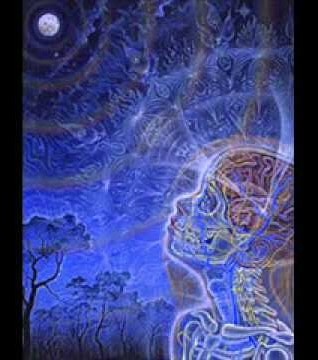
Three stages of meditation are described in the eight limbs of Yoga, listed in the ancient text of Patanjali’s Yoga Sutras.
1- Dharana.
Dharana means concentration.
In this first stage of meditation, we need to accustom our attention to returning to the same subject each time the mind wanders or becomes distracted.
It is the action of always bringing the mind back to the chosen object of observation.
The most commonly used subject of observation is the breath.
Taking the breath as an anchor is the simplest way to keep the mind busy observing a subject in perpetual motion.
The mind finds it very difficult, especially at first, to stop at a fixed point. As it loves change and distraction.
The practice of Darhana is, therefore, to bring our attention back, again and again, to our breathing, to observe the air entering through the nostrils, its passage down the throat, its descent along the trachea, the ribcage inflating, the skin of the belly inflating and deflating, then the reverse journey, etc…
This is the most accessible way of keeping the mind connected to the present moment, and always bringing it back to that moment, whenever it becomes distracted and scattered.
We can also take the flame of a candle as an object of attention, look at a rose, a holy image, etc…
Or (and this is the 2nd step in the Vipassana method), we can observe our physical sensations, from our toes to the top of our head. Without judging them, rejecting them, denying them or becoming attached to them, and going back the other way again and again…
The train station
Let’s take the example of a passenger on a station platform, watching the trains of thought go by.
Rather than being the one who hops on the train of thought each time a new thread of thought appears and gets swept away, we choose to be the one who remains on the platform, watching the trains arrive at the station, and then depart, choosing not to hop on the various trains. To remain The observer.
Once this first step becomes habitual, with the help of regular practice, the mind naturally becomes a little calmer each time, then the second step can appear.
2- Dhyana
Dhyana means meditation, contemplation.
This second stage of meditation takes place when the mind is calm, when thoughts are non-existent or few in number, so as to leave room for glimpsing and experiencing what is present behind the curtain of thoughts.
The mind, having become accustomed to remaining focused on one point, eventually disappears, if only for 2 or 3 seconds at first. Thoughts quickly reappear: “So this is Dhyana…”.
Gradually, for longer and longer periods, the human being becomes fully conscious, without any particular focus, in the absence of thoughts.
It’s a serene state where neither time nor space nor the body, matters.
The sky
Let’s take the example of a very cloudy sky, with clouds representing thoughts.
When I look at this sky, I first see the clouds, with their various shapes and sizes, etc…
I let the clouds pass through my field of vision, without wishing them to disappear, erase or ignore. I simply accept them, but detach myself from them, without giving them any importance.
Little by little, defocusing my attention, without expecting anything specific, space will appear between the passing clouds.
A space of blue sky, spacious, calm, serene.
This space has always been there, but I couldn’t see it because it was hidden by the flow of clouds.
3- Samadhi
Samadhi is the ultimate stage in the awakening of the human being, where the separation between our physical body and the greater whole is no longer felt.
A state of peace and ecstasy in which we melt into the moment and transcend our identity, in deep connection with the Divine.
A vibratory state where one realizes that everything is connected, that the energy field that links all living things is also connected to your body.
We are no longer just a defined, separate envelope of flesh (as our eyes would have us believe), but rather a permanently vibrating batch of cells interconnected with each other and with the energy field that links everything, or the “divine Matrix” as Greg Braden calls it.
The being becomes one with the universe.
It is important to remember that there is no particular goal to achieve and that each stage of meditation brings its own benefits.
The search for a goal to reach can only take us further away from that goal.
It is the journey that matters, the experience of these moments of serenity, however short they may be.
And even when thoughts return during meditation, watch them like a movie in the distance, without being caught up in them, to prolong the state of non-thought, bathed in presence, a timeless space of joy and plenitude.
So let’s enjoy the journey, with no particular goal in mind. Let’s remain curious, open and confident.
For more information about Mindfulness meditation: Article about Mindfulness
For more information on Samadhi, I recommend the film: Awakening Mind






Leave A Comment